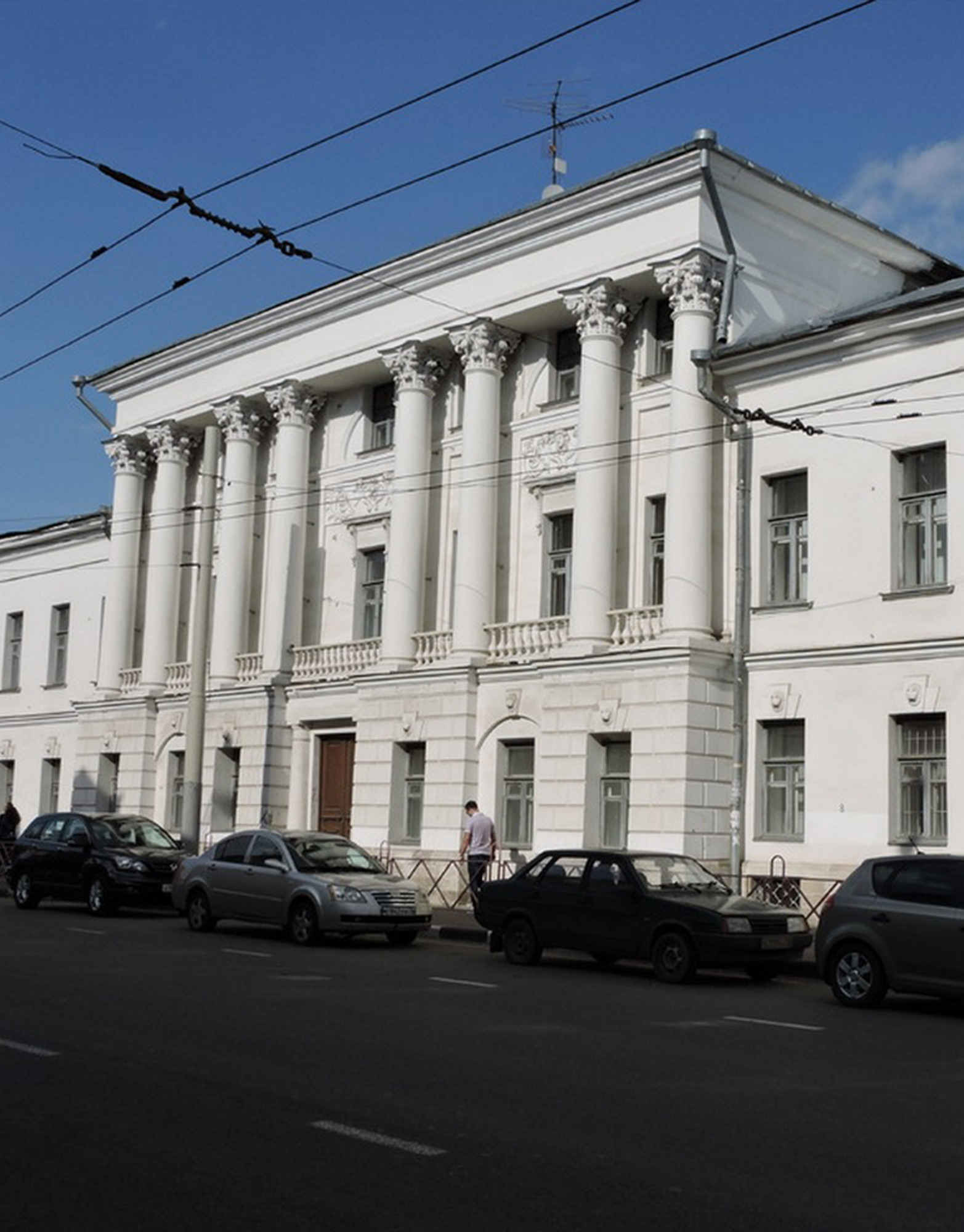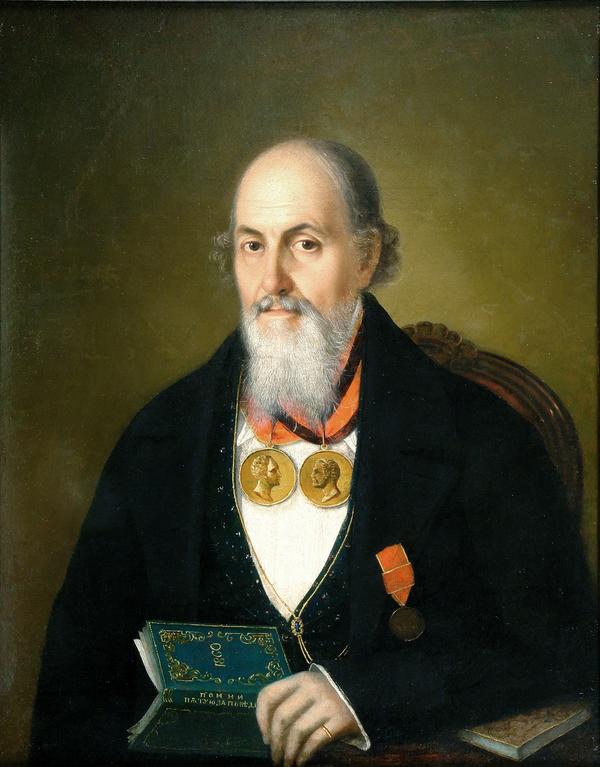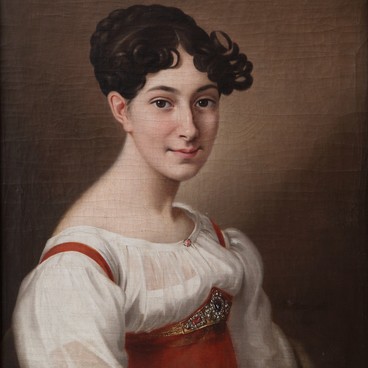This portrait of Vasily Sobolev, a Yaroslavl merchant, was painted by an unknown artist in 1860. Vasily Sobolev, a descendant of generations of serfs, was the first among his family to receive a letter of enfranchisement from Count Pyotr Saltykov. The privilege whereupon he, my son Vasily, was recorded as merchant with a capital of eight thousand rubles received from me…, — his father wrote in his memoirs.
1 / 2
Portrait of Vasily Sobolev
Creation period
1860
Dimensions
72x57 cm
Technique
oil on canvas
Collection
Exhibition
5
Open in app#1
Unknown author
Portrait of V.S. Sobolev
#2
#11
The privilege whereupon he, my son Vasily, was recorded as merchant with a capital of eight thousand rubles received from me…
— his father wrote in his memoirs.
#5
Vasily Semyonovich is portrayed advanced in years, having reached a respectable position in society, with important merchant’s attributes such as medals and awards. Every detail in the portrait points to the subject’s social status and wealth. The artist brought the large torso more to the front to visually fit into a static, isosceles triangular shape: this kind of composition serves to underscore the man’s statuesque look.
#7
From the last quarter of 18th century till mid-19th century it was common practice among Yaroslavl artists to paint portraits of local nobility, merchants and bourgeois class. For the third estate, commissioning a portrait was a way to demonstrate their social standing. Provincial portraitists worked to satisfy their patrons’ tastes and eventually developed their particular style, a combination of Yaroslavl iconographic traditions, popular art, and Western portraiture.
The wealthy were often painted in a pose of prayerful intercession, with the torso slightly turned, the arms bent at the elbow and the hands somewhat extended forward. To avoid unwanted religiosity, the subject would be depicted half-length or knee-length, usually against plain dark background. Although portraits of the time would represent a typical merchant or bourgeois, the sitter’s individual traits were always recognizable. Moreover, customers demanded that the painter would achieve a literal likeness. Artist Timofey Medvedev who worked in the Yaroslavl province in the first half of 19th century complained having to paint as they desire, whatever they take into head, and not to contradict them.
The wealthy were often painted in a pose of prayerful intercession, with the torso slightly turned, the arms bent at the elbow and the hands somewhat extended forward. To avoid unwanted religiosity, the subject would be depicted half-length or knee-length, usually against plain dark background. Although portraits of the time would represent a typical merchant or bourgeois, the sitter’s individual traits were always recognizable. Moreover, customers demanded that the painter would achieve a literal likeness. Artist Timofey Medvedev who worked in the Yaroslavl province in the first half of 19th century complained having to paint as they desire, whatever they take into head, and not to contradict them.
#10
It was no accident that Vasily Semyonovich joined the merchants. During the Seven Years' War, general Pyotr Saltykov recruited a few serfs to accompany him and run household errands; Vasily Sobolev’s great-grandfather was among them. He quickly adapted himself to the new situation and managed to procure wine and delicacies at the front. This experience served him well: on return home he started successful commercial operations. His great-grandson Vasily followed in his steps. After a while, when he made enough money, he brought his whole family to Yaroslavl and together with his brothers expanded wine trade all over the city.
#12
Yaroslavl Museum of Fine Arts
read morehide
00:00
00:00
1x
Portrait of Vasily Sobolev
Creation period
1860
Dimensions
72x57 cm
Technique
oil on canvas
Collection
Exhibition
5
Open in app
Share




